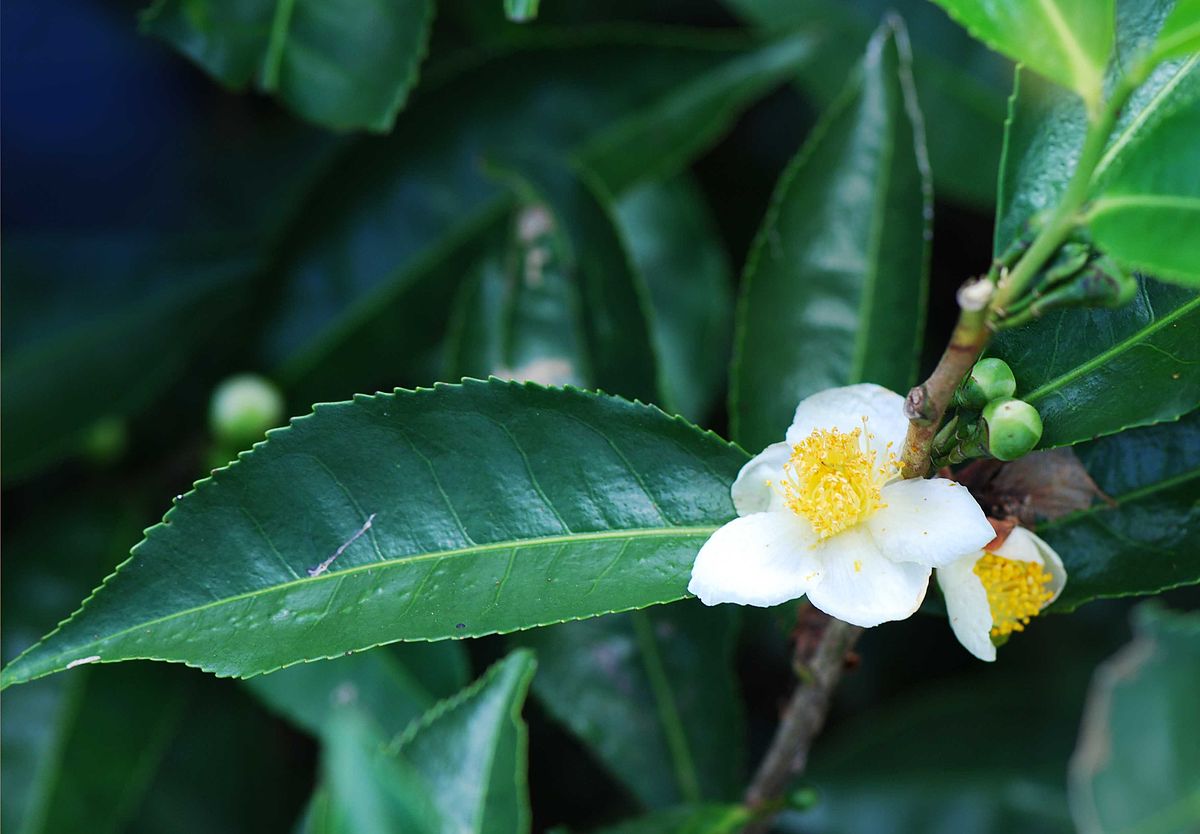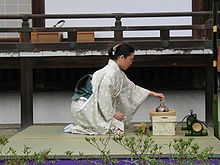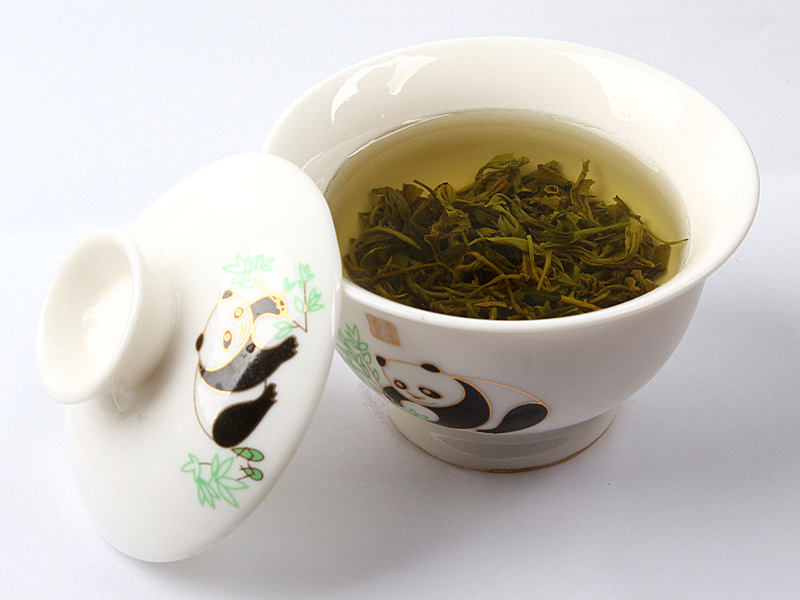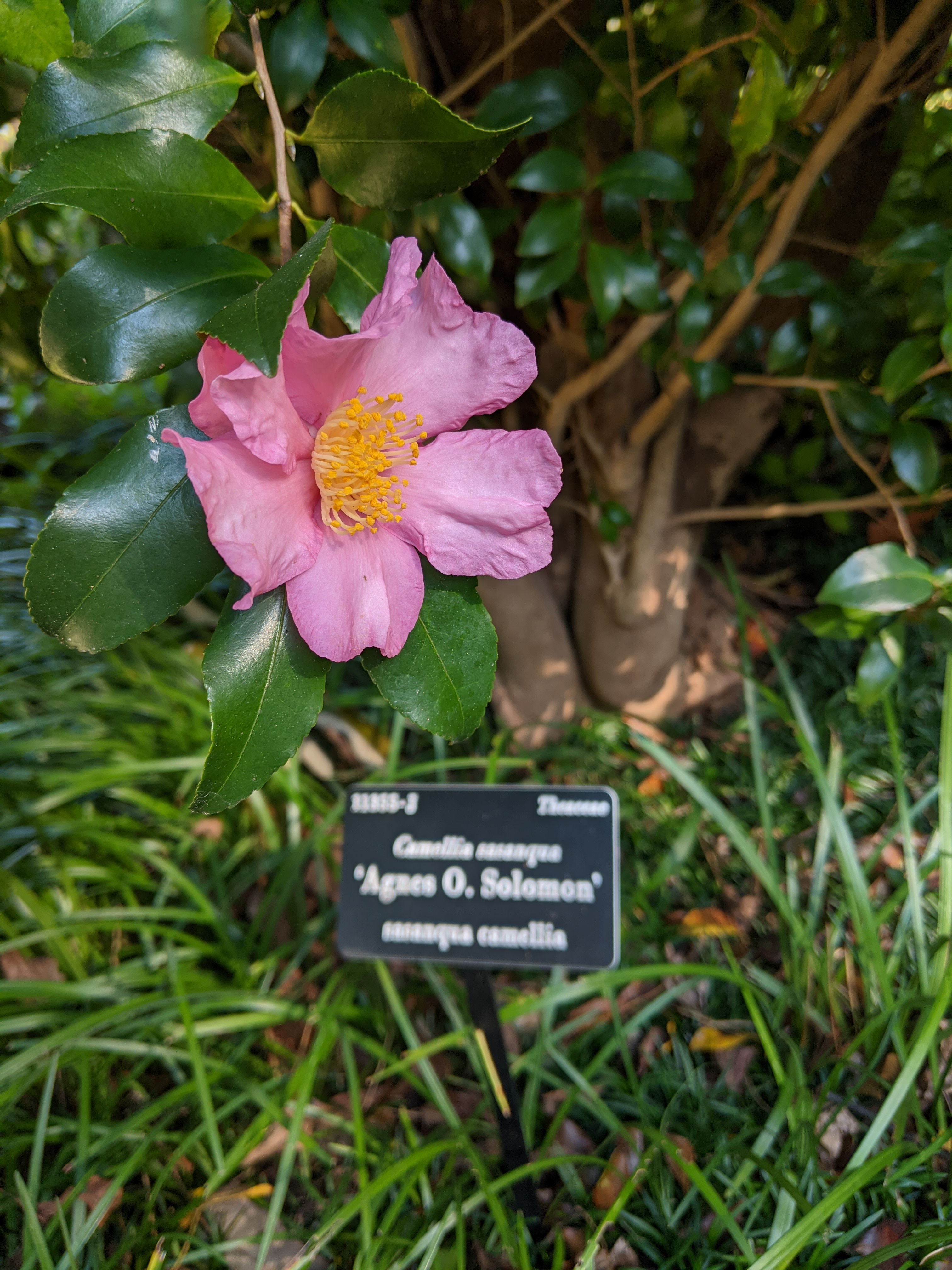By Maryann Readal
 Tea is the most widely consumed beverage in the world, after water. Countless books have been written about tea, which is the leaf product of this herbal shrub, Camellia sinensis. The history of C. sinensis and its product goes back almost 5,000 years, and it is believed to be one of the oldest plants cultivated by humans. C. sinensis is truly a plant that has been responsible for wars, influenced social customs worldwide, inspired religious practices, and, of course, has lifted many troubled and tired spirits with its medicinal properties.
Tea is the most widely consumed beverage in the world, after water. Countless books have been written about tea, which is the leaf product of this herbal shrub, Camellia sinensis. The history of C. sinensis and its product goes back almost 5,000 years, and it is believed to be one of the oldest plants cultivated by humans. C. sinensis is truly a plant that has been responsible for wars, influenced social customs worldwide, inspired religious practices, and, of course, has lifted many troubled and tired spirits with its medicinal properties.
Camellia sinensis is an evergreen shrub or small tree that is usually trimmed to about six feet when cultivated for its leaves. It thrives in acidic, rich soil where rainfall is adequate throughout the year, and grows in dappled shade to full sun. It is winter hardy in zones 7-9 when grown as a landscape shrub, but it can also be grown in a pot and moved indoors or grown in a greenhouse where winter temperatures fall below freezing. The fragrant white flowers have yellow stamens and bloom in the fall to early winter and are attractive to pollinators.
Radiocarbon dating has placed some ancient C. sinensis shrubs growing in regions of China at up to 3,200 years old. Some of these old shrubs have been cut down to make way for growing rubber trees.
The new leaves of Camellia sinensis are harvested for tea. All types of tea come from two C. sinensis varieties: Camellia sinensis var. sinensis (Chinese tea) and Camellia sinensis var. assamica (India tea). Six true teas come from C. sinensis: black, white, oolong, green, pu-erh, and a rare yellow tea (all other “teas” are infusions of flowers, herbs, roots, or bark, and are properly called tisanes). The differences in taste, color, and aroma of these teas depend on where they were grown, their variety, and the processing of the leaves. The small white flowers of C. sinensis are edible and are used to brew a sweet, rich drink. China is the number one producer of tea, producing two million tons annually. India, Kenya, and Sri Lanka follow China in tea production in that order. Interestingly, Turkey is the largest consumer of tea per capita.
The tea plant contains over 500 compounds that contribute to its flavor and health benefits. Green tea’s first recorded use in ancient China was for medicinal purposes, where it was used as a preventive drink for many health problems. Even today, green tea is used to boost the immune system, and researchers have found it to be an effective ingredient in cosmetic products to block UV rays and to reduce cellulite tissue. Though all teas have medicinal benefits, black tea contains antioxidants and other compounds that are particularly good for heart and gut health. Researchers have found that older C. sinensis shrubs grown at higher elevations have the most medicinal compounds.
The history of tea is a long one. In one popular Chinese legend, Emperor Shen Nung, known as the Father of Chinese medicine, in 2737 BCE was drinking a bowl of hot water when the leaves of the tree he was sitting under dropped into his water. After taking a drink of the water, he observed a nice flavor and felt restored. He encouraged people to cultivate the tea plant. And with that, tea as an important commodity and drink was born.
 Tea was introduced into Japan and Korea by Buddhist monks in the 6th century, where it became a drink of the religious classes. The tea ceremony, developed by Buddhist monks, became an important social custom. Tea was considered a medicinal drink at that time. Portuguese priests and traders brought tea to the west in the early 16th century. Drinking tea became popular in Britain in the 17th century, and tea became a worldwide industry with huge demand.
Tea was introduced into Japan and Korea by Buddhist monks in the 6th century, where it became a drink of the religious classes. The tea ceremony, developed by Buddhist monks, became an important social custom. Tea was considered a medicinal drink at that time. Portuguese priests and traders brought tea to the west in the early 16th century. Drinking tea became popular in Britain in the 17th century, and tea became a worldwide industry with huge demand.
An interesting tea story reveals that the British introduced tea cultivation in India to compete with the Chinese monopoly of tea. As tea consumption grew around the world, the British became the major supplier of the product. Tea had to be paid for in silver bullion, and some British feared damage to their economy as a result of the loss of so much bullion. As a way to generate more bullion, Britain began exporting opium to the Chinese and increased imports fivefold between 1821 and 1837. Seeing the effects of opium on their people, the Qing government banned the import of opium into China. The banning of opium created financial exchange problems for the British and was one of the causes of the First Opium War. It was at this time that the British brought the tea plant to their colony in India and began growing it to fill worldwide demand for the leaves.
The British Tea Act ignited the American Revolution with the Boston Tea Party when 342 tea chests were dumped into the harbor. Americans switched from drinking tea to drinking coffee and teas made with other plants. But the American’s love of the true tea continued even after the war. Fast American clipper ships began sailing to China to bring home the product. It’s interesting to note that the first three American millionaires—T.H. Perkins of Boston, Stephen Girard of Philadelphia, and Jacob Astor of New York—all made some of their fortune in the tea trade.
 It is a long and interesting history for this simple drink brewed from the leaves of the C. sinensis plant. The story continues with iced tea, tea bags, matcha tea, chai, and now bubble tea and tea-infused cocktails. While old tea leaves from the ancient trees have become a valuable investment for some, tea connoisseurs believe that artisanal teas produced in the ancient art of tea processing are a promise for the future.
It is a long and interesting history for this simple drink brewed from the leaves of the C. sinensis plant. The story continues with iced tea, tea bags, matcha tea, chai, and now bubble tea and tea-infused cocktails. While old tea leaves from the ancient trees have become a valuable investment for some, tea connoisseurs believe that artisanal teas produced in the ancient art of tea processing are a promise for the future.
As we drink our cup of tea, we should remember that every tea leaf is touched by human hands. An interesting, well-researched fiction book about the tea plant is Lisa See’s The Tea Girl of Hummingbird Lane. It is a fascinating story of the history of tea and tea making in China.
For more information about Camellia sinensis, recipes, and a screen saver, go to the Herb Society of America’s webpage https://www.herbsociety.org/hsa-learn/herb-of-the-month.html.
(Editor’s Note: Check out our recent post by Matt Millage for info on other Camellia species: https://herbsocietyblog.wordpress.com/2020/11/16/not-just-for-teatime-the-herbal-significance-of-camellias/)
Photo Credits: 1) Camellia sinensis leaf and flower (Pancrat via Wikipedia Commons); 2) Different teas and their colors (Wikimedia Commons); 3) Japanese tea ceremony (Wikimedia Commons); 4) Picking tea in China (Wikimedia Commons)
References
Koch, W., Zagórska, J., Marzec, Z., & Kukula-Koch, W. (2019). Applications of Tea (Camellia sinensis) and its Active Constituents in Cosmetics. Molecules (Basel, Switzerland), 24(23), 4277. https://doi.org/10.3390/molecules24234277 Accessed 5/3/21.
Not Just Tea Panel: The Untold History and Future of Tea. (2020) https://www.youtube.com/watch?v=vMsZGkG1Myc. Accessed 5/17/21.
Reich, Anna. (2010). Coffee and Tea History in a Cup. The Herbarist. 76, 8-15.
See, Lisa. (2017). The Tea Girl of Hummingbird Lane. New York, Scribner.
Tea Crossing. Where Does Tea Come From? Complete Guide: Camellia Sinensis. (2021). https://teacrossing.com/where-does-tea-come-from-complete-guide-camellia-sinensis/ Accessed 5/3/21.
Wikipedia. History of Tea. (2021) https://en.wikipedia.org/wiki/History_of_tea Accessed 5/3/21.
Medicinal Disclaimer: It is the policy of The Herb Society of America, Inc. not to advise or recommend herbs for medicinal or health use. This information is intended for educational purposes only and should not be considered as a recommendation or an endorsement of any particular medical or health treatment. Please consult a health care provider before pursuing any herbal treatments.
Maryann is the Secretary of The Herb Society of America and a Master Gardener. She is a member of The Society’s Texas Thyme Unit in Huntsville, TX. She gardens among the pines in the Piney Woods of East Texas.


 second only to water in most consumed beverages (DeWitt, 2000). I, myself, have become a tea drinker over the years, and as a plant nerd, I wanted to know more about how the tea leaves were farmed. What I ended up learning is that while tea (Camellia sinensis) is by far the most well known and widely used product of the genus Camellia, it is by no means its only contribution to the herbal marketplace.
second only to water in most consumed beverages (DeWitt, 2000). I, myself, have become a tea drinker over the years, and as a plant nerd, I wanted to know more about how the tea leaves were farmed. What I ended up learning is that while tea (Camellia sinensis) is by far the most well known and widely used product of the genus Camellia, it is by no means its only contribution to the herbal marketplace. And finally, C. sasanqua has a long history of being used for both tea and tea seed oil in Japan, both of which go back centuries. Let us look at each of these four species in a bit more detail to better understand their contributions to both Asia and the world.
And finally, C. sasanqua has a long history of being used for both tea and tea seed oil in Japan, both of which go back centuries. Let us look at each of these four species in a bit more detail to better understand their contributions to both Asia and the world. tea production is now centered mainly in the Eastern Hemisphere, however some tea is produced in America. Several states in the U.S. have small tea growers, but most American tea is grown in South Carolina, primarily at the 127-acre Charleston Tea Plantation—arguably one of the most historic tea plantations in the country.
tea production is now centered mainly in the Eastern Hemisphere, however some tea is produced in America. Several states in the U.S. have small tea growers, but most American tea is grown in South Carolina, primarily at the 127-acre Charleston Tea Plantation—arguably one of the most historic tea plantations in the country.  used by the geisha to remove make-up and act as an antioxidant. C. japonica is famous for its anti-inflammatory activity in the field of medicine and ethnobotany. It is reported as a bioactive plant in folk medicine of South Korea, Japan, and China. Antioxidant and anti-inflammatory activities of the leaves are already reported, and this plant is proved to be a source of triterpenes, flavonoids, tannin, and fatty acids having antiviral, antioxidant, and anti-inflammatory activities. The seeds are also used as a traditional medicine in folk remedies for the treatment of bleeding and inflammation (Majumder, 2020).
used by the geisha to remove make-up and act as an antioxidant. C. japonica is famous for its anti-inflammatory activity in the field of medicine and ethnobotany. It is reported as a bioactive plant in folk medicine of South Korea, Japan, and China. Antioxidant and anti-inflammatory activities of the leaves are already reported, and this plant is proved to be a source of triterpenes, flavonoids, tannin, and fatty acids having antiviral, antioxidant, and anti-inflammatory activities. The seeds are also used as a traditional medicine in folk remedies for the treatment of bleeding and inflammation (Majumder, 2020). Native to China, Camellia oleifera also produces tea seed oil. It is known as a cooking oil to hundreds of millions of people in east Asia, and is one of the most important cooking oils in southern China as it has a very high smoke point of 252 degrees Fahrenheit—perfect for deep frying. It has also been used to protect Japanese woodworking tools and cutlery from corrosion (Odate, Reprint Edition 1998). Sometimes also used in soap making, it is said to add a supple conditioner for the skin. Overall, the importance of it as a cooking oil cannot be overstated for large regions of Asia, as this remains to be C. oleifera’s most valuable contribution today.
Native to China, Camellia oleifera also produces tea seed oil. It is known as a cooking oil to hundreds of millions of people in east Asia, and is one of the most important cooking oils in southern China as it has a very high smoke point of 252 degrees Fahrenheit—perfect for deep frying. It has also been used to protect Japanese woodworking tools and cutlery from corrosion (Odate, Reprint Edition 1998). Sometimes also used in soap making, it is said to add a supple conditioner for the skin. Overall, the importance of it as a cooking oil cannot be overstated for large regions of Asia, as this remains to be C. oleifera’s most valuable contribution today. Matt has worked in public gardening for a little over six years and is currently the horticulturist in the Asian Collections at the U.S. National Arboretum. He previously worked at Smithsonian Gardens in a variety of capacities. Matt is an ISA-certified arborist and an IPM manager certified with both Virginia and DC.
Matt has worked in public gardening for a little over six years and is currently the horticulturist in the Asian Collections at the U.S. National Arboretum. He previously worked at Smithsonian Gardens in a variety of capacities. Matt is an ISA-certified arborist and an IPM manager certified with both Virginia and DC.